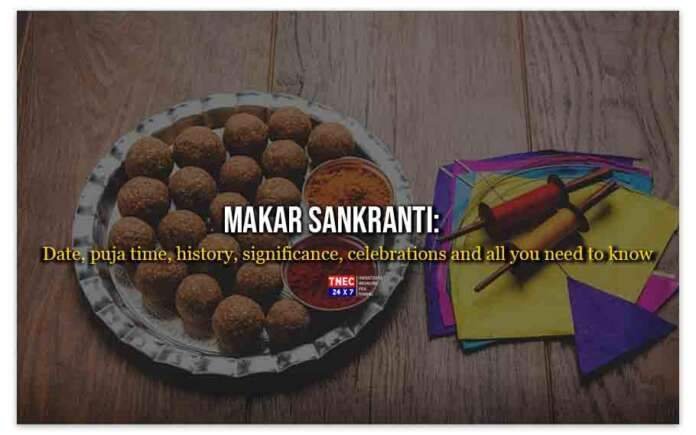What is Makar Sankranti?
Makar Sankranti 2022 : is a harvest festival celebrated in most of India by the Hindu population. It is one of the major festivals celebrated with much pomp in India, Makar Sankranti holds great significance for Hindus.
The festival is considered auspicious for tenacity, worship, charity and sacrifice in the scriptures. Makar Sankranti, or simply Sankranti, is dedicated to Lord Surya (Sun God) and marks the sun’s transit into Makara (Capricorn) rashi (zodiac sign).
This festival is considered the most auspicious occasion and is one of the few Hindu festivals aligned with the solar cycle. It marks the beginning of the harvest season when people worship new crops and share them with delight.
Makar Sankranti Significance:
Makar Sankranti is considered a day of happiness and prosperity by Hindus. It is believed that taking a bath in the Ganges, on this day, is auspicious. Devotees also pay tribute to the Sun God and express gratitude towards him for blessing us with his warm and glowing rays.
Festivals associated with Makar Sankranti
The festivities associated with Makar Sankranti are known by various names Magh Bihu in Assam, Maghi in Punjab, Maghi Saaji in Himachal Pradesh, Maghi Sangrand or Uttarain (Uttarayana) in Jammu, Sakraat in Haryana, Sukarat in central India, Pongal in Tamil Nadu, Uttarayan in Gujarat, and Uttar Pradesh, Ghughuti in Uttarakhand, Dahi Chura in Bihar, Makar Sankranti in Odisha, Karnataka, Maharashtra, Goa, West Bengal also called Poush Sankranti.
The festival Sankranti is celebrated for four days in Andhra Pradesh and Telangana. Telugu women hindus decorate the entrance of their homes by geometric patterns drawn using colored rice flour, called Muggu.
Day 1 – Bhogi
Day 2 – Sankranti the main festival day
Day 3 – Kanuma
Day 4 – Mukkanuma
Bhogi:
Bhogi is the first day of the four-day festival. It is celebrated with a bonfire with logs of wood, other solid-fuels, and wooden furniture at home that are no longer useful.
In the evening, a ceremony called Bhogi Pallu, fruits of the harvest such as regi pallu and sugarcane are collected along with flowers of the season. Money is often placed into a mixture of treats and is poured over children. The children then collect the money and sweet fruits.
Sankranti:
The second and main day of the four-day festival, and is dedicated to the Hindu god Surya. The day marks the start of the Uttarayana, when the sun enters the 10th house of the zodiac Makara.
It is commonly called as Pedda Panduga (Big festival) in the Andhra Pradesh state. Ariselu, a traditional sweet dish, is offered to the god.
Kanuma:
Kanuma: The third day of the four-day festival, is dedicated to the cattle and other domestic animals.
Mukkanuma:
Mukkanuma: It is the fourth and last day of the four-day festival. Many families hold reunions on this day.
Uttarayan, as Makar Sankranti is called in Gujarati, is a major festival in the state of Gujarat which lasts for two days.
14 January is Uttarayan
15 January is Vasi-Uttarayan (Stale Uttarayan).
Gujarati people keenly await this festival to fly kites, called ‘patang’. Kites for Uttarayan are made of special light-weight paper and bamboo and are mostly rhombus shaped with a central spine and a single bow.
The string often contains abrasives to cut down other people’s kites. In Gujarat, from December through to Makar Sankranti, people start enjoying Uttarayan.
Every state has their own way of celebrating and feasting with all their family members .
Makar Sankranti Date And Timings :
This year, Makar Sankranti falls on Friday, January 14, 2022, according to Drik Panchang.
Additionally, the Makar Sankranti Punya Kala timings are from 02:43 pm to 05:45 pm. The duration is 3 Hours, 2 Mins. The Makar Sankranti Maha Punya Kala timings are from 02:43 pm to 04:28 pm. Lastly, the Makara Sankranti moment is 02:43 pm, as per Drik Panchang.
Happy Makar Sankranti!
Let this festive season bring with it endless happiness and joy.











